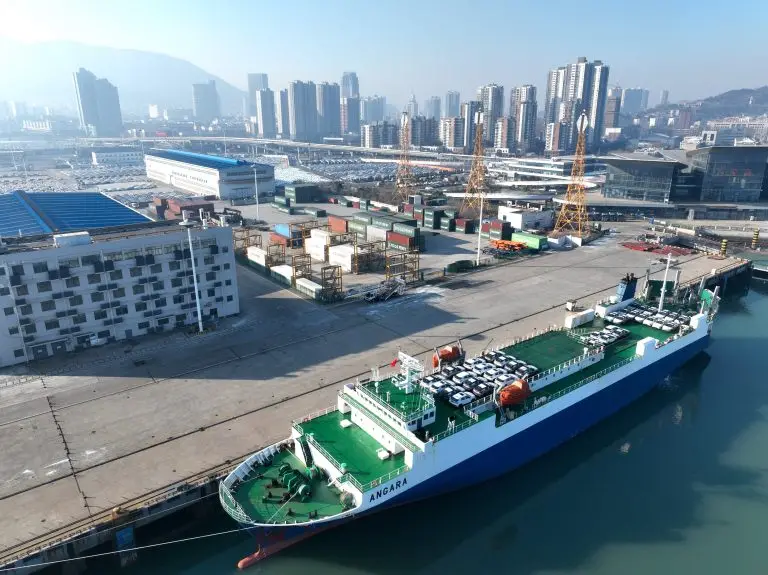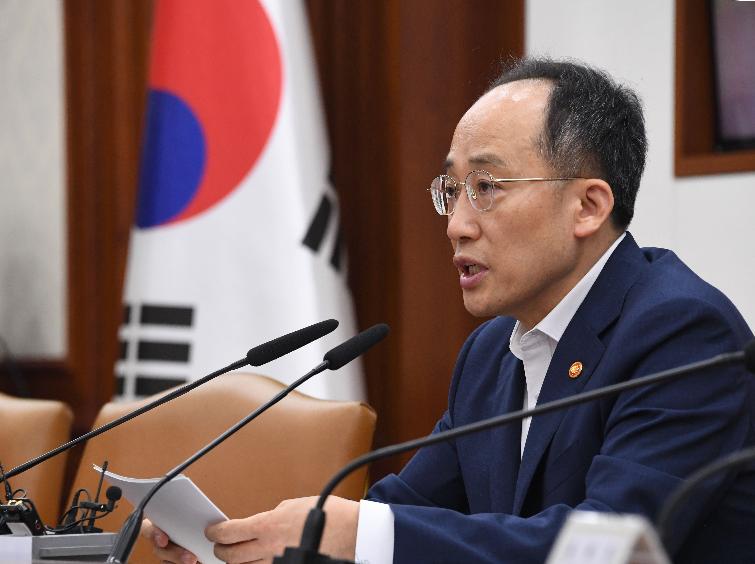[동아시아포럼] 환율 변동이 중국 수출에 미치는 영향
中, 1990년대 이후 수출 급증, 연평균 증가율 18% 섬유류 수출 감소하고 전자제품, 기계류 수출 증가 복잡한 재화의 비중 늘어나면서 2021년 CCI 18위
[동아시아포럼]은 EAST ASIA FORUM에서 전하는 동아시아 정책 동향을 담았습니다. EAST ASIA FORUM은 오스트레일리아 국립대학교(Australia National University) 크로퍼드 공공정책대학(Crawford School of Public Policy) 산하의 공공정책과 관련된 정치, 경제, 비즈니스, 법률, 안보, 국제관계에 대한 연구·분석 플랫폼입니다. 저희 폴리시코리아(The Policy Korea)와 영어 원문 공개 조건으로 콘텐츠 제휴가 진행 중입니다.
중국이 본격적으로 글로벌 시장에 편입되기 시작한 1990년대 이후 수출이 연평균 증가율 18%를 기록하며 폭발적으로 확대됐다. 1995년 중국의 총수출액은 2,240억 달러(약 300조원)로, 이 중 섬유류의 비중이 30%로 가장 많았고 이어 전자제품 14%, 기계류가 10%의 순으로 나타났다. 2021년 들어 중국의 총수출액은 3조7,000억 달러(약 480조원)로 더욱 증가했다. 섬유류의 비중만 13%로 감소했고, 전자제품과 기계류는 각각 26%, 19%로 증가했다.

복잡한 재화일수록 환율이 수출에 미치는 영향 적어
코로나19 팬데믹 동안 중국은 정교한 기술을 필요로 하는 재화의 생산 효율성을 제고하는 데 성공했다. 일례로 팬데믹 기간 중국은 코로나19 백신의 생산과 수출이 늘어났다. 2021년 전염병대비혁신연합(CEPI)의 조사에 따르면 중국은 잠재적 백신 생산에서 미국에 이어 2위에 올랐다. 실제 2019년 혈청과 백신의 수출액은 10억 달러(약 1조3,000억원) 미만이었지만 2021년에는 250억 달러(약 32조4,000억원)를 넘어섰다.
세사르 달고(Cesar Hidalgo) 매사추세츠공대(MIT) 교수와 리카르도 하우스만(Ricardo Hausmann) 하버드대 교수는 그들이 공동 집필한 저서 ‘경제복잡성과 재화 공간(Economic Complexity And Product Space)’에서 ‘여러 국가가 수출하는 품목은 쉽게 생산할 수 있지만 소수의 국가에서 수출하는 재화는 생산하기 어렵다’고 주장했다. 앞서 언급한 백신의 경우 공정이 까다롭고 높은 기술 수준을 요하는 품목으로 전 세계 208개 국가가 백신을 수입하고 있으나 수출국은 90개국으로 불과하며 이마저도 백신 수출 상위 10개국이 전체 수출액의 93%, 수출 물량의 80%를 차지하고 있다.
해당 저서에서 달고 교수와 하우스만 교수는 많은 재화를 생산하는 데 비교 우위가 있는 국가는 상대적으로 더 높은 생산역량을 보유하고 있다고 가정하면서 선진국들은 생산공정이 복잡한 재화를 다양하게 생산하고 수출한다고 추론했다. 이를 토대로 연구진은 재화의 편재성과 경제적 다양성을 고려해 1,200여 개 재화의 제품 복잡성 지수(Product Complexity Indices, PCI)와 132개 나라에 대한 국가 복잡성 지수(Country Complexity Indices, CCI)를 산출했다. 연구 결과에 따르면 중국의 CCI는 1995년 39위에서 2021년 18위로 상승했다.
아시아개발은행(Asian Development Bank, ADB)은 PCI와 CCI 지수를 토대로 생산공정이 복잡하고 높은 기술력이 필요한 재화일수록 환율 상승의 영향을 덜 받는다는 사실을 발견했다. 이에 대해 ADB는 공정이 복잡한 품목일수록 생산이 어렵고 대체재가 적기 때문에 가격이 상승해도 수요가 크게 감소하지 않기 때문이라고 설명했다. 즉 복잡한 재화의 수출은 환율이 상승해 수입국에서의 판매가격이 상승하더라도 수출액과 수출물량에 영향을 덜 미친다는 것이다.
2001년 WTO 가입 이후, 외국인 직접 투자 급증
중국은 2001년 세계무역기구(WTO)에 가입하기 전까지 주로 노동집약적인 제조품을 수출해 왔다. 그런 중국이 WTO에 가입하자 외국인 투자자들은 중국이 사회주의의 논리에서 벗어나 법치주의, 자유주의 시장경제를 존중할 것이라고 확신하게 됐고, 이후 외국인의 직접 투자가 급증했다. 또한 외국인 투자 기업(Foreign-invested enterprises, FIE)들은 중국 도심에 공장을 설립해 농촌의 잉여 노동력을 저임금 근로자로 확보할 수 있었다. 실제로 이 시기 애플과 같은 글로벌 기업의 기술력과 중국의 풍부하고 값싼 노동력이 결합하면서 중국의 수출이 급증했고 중국의 CCI도 2000년 39위에서 2008년 24위로 상승했다. 이뿐 아니라 2001년부터 2005년까지 상대적으로 약세를 보인 환율도 중국 수출의 가격 경쟁력을 높이는 데 기여했다.
윌렘 토벡(Willem Thorbecke), 첸 첸(Chen Chen) 니메쉬 살리케(Nimesh Salike)의 논문 ‘중국 수출의 환율효과: 제품 고도화와 환율 탄력성(Exchange rate effects on China’s exports: Product sophistication and exchange rate elasticity)에서는 중국이 190개국에 수출하는 1,242개 품목별로 환율이 미치는 영향을 제품의 복잡성 수준과 시간에 따라 분석했는데, 중국의 환율개혁 중 상당수는 위안화에 유연성을 높이기 위한 조치였던 것으로 나타났다. 중국 정부는 1980년대부터 이중환율제를 실시하다가 1990년대 들어 달러화와의 격차가 커지면서 1994년 관리변동환율제를 도입한 바 있다. 환율이 외환시장에서 결정되도록 하되 하루 ±0.3% 이상 환율이 변하는 경우 정부가 개입하도록 한 것이다. 이후 중국 정부는 1997년 동아시아 외환 위기, 2008년 글로벌 금융위기, 위안화 저평가 등 통화시장의 사정을 반영해 고정환율제와 관리변동환율제를 번갈아 가며 시행했다.
이 시기 중국산 제품을 수출하는 190개국의 통화와 위안화 환율 변동에 대한 데이터들은 환율이 중국의 수출에 미치는 영향을 계량경제학적으로 분석할 수 있는 상당한 양의 독립적인 변데이터에 제공했다. 중국이 WTO에 가입하기 전인 1995년부터 2001년까지의 환율 변동 데이터를 분석한 결과, 이 기간 위안화 가치가 10% 상승하면 수출은 6% 감소하는 것으로 나타났다. 2002년부터 2004년까지는 위안화 가치가 10% 절상할 경우 수출은 8% 감소하고 2005년부터 2007년까지는 7% 감소했다. 하지만 2008년 글로벌 금융 위기 이후 2010년부터 2013년까지는 위안화 가치 변동이 2010~2013년 수출에 유의한 영향을 미치지 않았고 2014년부터 2018년까지는 수출이 1.4% 감소하는 데 그쳤다.
글로벌 금융위기 이후 중국 수출품 CCI 꾸준히 상승
앞서 중국 정부는 2002년부터 2004년까지 위안화 절상을 막고 수출을 촉진하기 위해 외환시장에 대한 개입을 확대하고 외환보유고를 축적한 바 있다. 그 결과 글로벌 금융 위기 이후 중국의 CCI 순위는 꾸준히 상승했다. 중국의 수출에서 비중이 큰 상위 15개 품목 중 CCI 하위 5분위에 속하는 품목은 1995년 7개, 2000년 5개, 2005년 3개, 2010년과 2015년 2개로 지속적으로 감소했다. 2018년에는 최하위 5분위에 속하는 제품이 없는 것으로 나타났다. 수출에서 복잡한 제품의 비중이 늘어나면서 환율의 중요성도 점차 축소되고 있다. 실제로 1995년부터 2018년까지 위안화가 절상됐을 때 고도의 기술력이 필요한 수출품은 그렇지 않은 품목에 비해 감소폭이 적었다.
이러한 연구 결과에 비춰볼 때 2022년 4월부터 시작된 위안화의 가치 하락은 중국의 수출에 큰 영향을 미치기는 어려울 것으로 보인다. 특히 전자제품과 기계류와 같이 복잡한 기술력을 요하는 제품의 경우 환율 하락의 영향이 거의 없거나 미미할 가능성이 높다. 또한 중국은 제조업이 점차 고도화되고 제조품의 수출이 환율의 영향을 덜 받기 때문에 앞으로 환율개혁에 더 과감해질 수 있다.
최근 중국 정부는 자국의 산업을 육성하기 위해 다양한 무역·산업 정책을 채택하고 있다. 특히 첨단기술 부문 제조업을 지속적으로 확대함으로써 환율의 충격을 완화하고 있다. 다만 복잡한 재화의 수출이 환율의 영향을 받지 않는다고 하더라도 주요국 간 무역전쟁으로 인한 관세 인상이 수출 감소에 영향을 미치고 있는 만큼 이에 대한 데이터를 분석하고 대응 전략을 모색해야 할 것으로 보인다.
원문의 저자는 윌렘 토벡(Willem Thorbecke)는 일본경제무역산업연구소(Research Institute of Economy, Trade and Industry, RIETI)의 선임연구원입니다.

Exchange rates exert limited influence on China’s exports
The value and sophistication of China’s exports has exploded since the 1990s. In 1995, the value of China’s total exports was US$224 billion, with textiles comprising 30 per cent of exports, electronics 14 per cent and machinery 10 per cent. In 2021, China’s total exports equalled US$3.7 trillion. The share of textiles fell to 13 per cent, while the share of electronics rose to 26 per cent and machinery to 19 per cent.

China’s efficiency in producing technologically sophisticated products accelerated further during the COVID-19 pandemic. While exports of serums and vaccines equalled less than US$1 billion in 2019, these exports rose to more than US$25 billion in 2021. This increase was primarily due to exports of Chinese-made COVID-19 vaccines.
Cesar A Hidalgo and Ricardo Hausmann have reasoned that products exported by many countries are easier to produce while those exported by only a few countries are more difficult to produce. They also assumed that countries with a comparative advantage in producing many products have greater and more diverse capabilities. By considering the ubiquity of products in relation to economic diversity, they calculated product complexity indices for more than 1200 products and country complexity indices (CCI) for 132 countries. China’s CCI ranked 39th in 1995 and rose to 18th in 2021.
Based on this index, researchers at the Asian Development Bank have argued that more sophisticated goods should be less affected by exchange rate appreciations. As complex goods are harder to produce, they typically have fewer substitutes — hence any increase in price would cause smaller decreases in the quantity demanded. This implies that exports of more complex products will be less affected by exchange rate appreciations that raise their prices in importing countries.
Before joining the World Trade Organization (WTO) in 2001, China largely exported labour-intensive manufactured goods. Following its WTO accession, a surge of foreign direct investment flooded into the country. Joining the WTO gave investors confidence that China would respect the rule of law. Foreign-invested enterprises established factories in urban areas. This attracted surplus labour from the rural sector as many were willing to work for low wages.
The combination of technology from companies like Apple and an abundance of Chinese workers led to a surge in exports. It also contributed to China’s CCI rising from 39th place in 2000 to 24th place in 2008. A relatively weak exchange rate from 2001 to 2005 may have also increased the price competitiveness of China’s exports.
My soon-to-be-published research with Chen Chen and Nimesh Salike investigates how bilateral exchange rates impact China’s exports of 1242 goods to 190 countries across time and product complexity levels. Many of China’s exchange rate reforms involved allowing greater flexibility for the Chinese renminbi relative to the US dollar. But the huge volatility of the renminbi relative to 190 currencies provides a significant amount of independent variation in the data that helps to identify in an econometric sense how exchange rates affect China’s exports.
Between 1995 and 2001, before China joined the WTO, a 10 per cent renminbi appreciation was associated with a 6 per cent fall in exports. Then between 2002 and 2004, a 10 per cent appreciation was associated with an 8 per cent fall in exports.
Between 2005 and 2007, a 10 per cent appreciation was associated with a 7 per cent fall in exports. But after the 2008 global financial crisis, a 10 per cent appreciation had no impact on exports over the 2010–13 period and only reduced exports by 1.4 per cent over the 2014–18 period.
During 2002–04, China intervened significantly and accumulated foreign exchange reserves to prevent the renminbi from appreciating, stimulating exports during this time. After the global financial crisis, China’s CCI ranking climbed steadily.
Among China’s top 15 export products, seven were in the least sophisticated quintile in 1995, five in 2000, three in 2005, and two in 2010 and 2015. None were in the lowest quintile in 2018. As China’s export basket becomes more sophisticated, the exchange rate is becoming less important for China’s exports. Over the entire 1995–2018 period, more sophisticated exports decreased less when the renminbi appreciated, compared to less sophisticated exports.
As such, the depreciation of the Chinese yuan that began in April 2022 may not significantly stimulate China’s exports, especially for high-end products such as electronics and machinery. As China’s manufacturing exports are more sophisticated and less sensitive to exchange rates, China can be bolder in reforming its exchange rate regime.
The Chinese government has employed trade and industrial policies to upgrade its industries, including liberalising reforms, trade policies and technology policies. By continuing to promote high tech manufacturing, the Chinese economy can be insulated from exchange rate shocks. But an important question for future research is whether more sophisticated exports are also less responsive to tariff increases, such as those arising from trade wars.



























